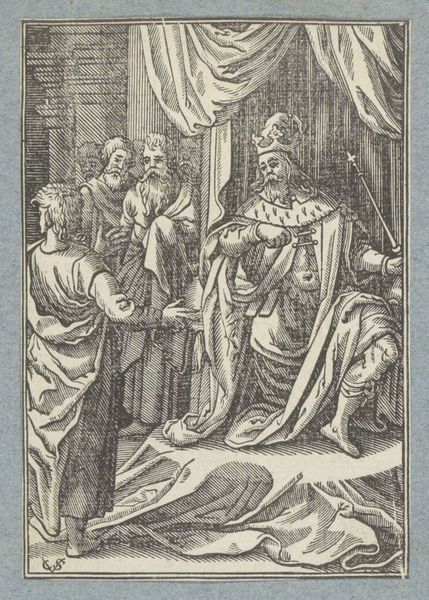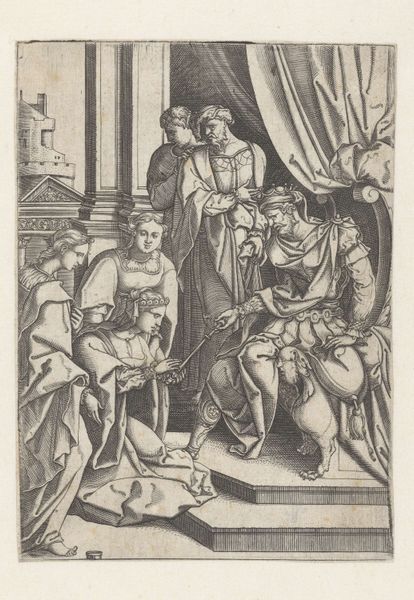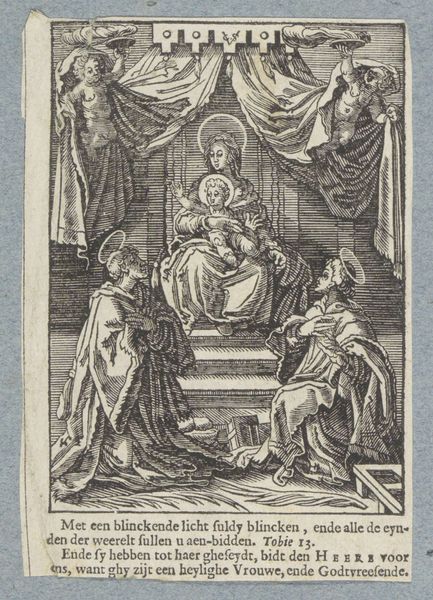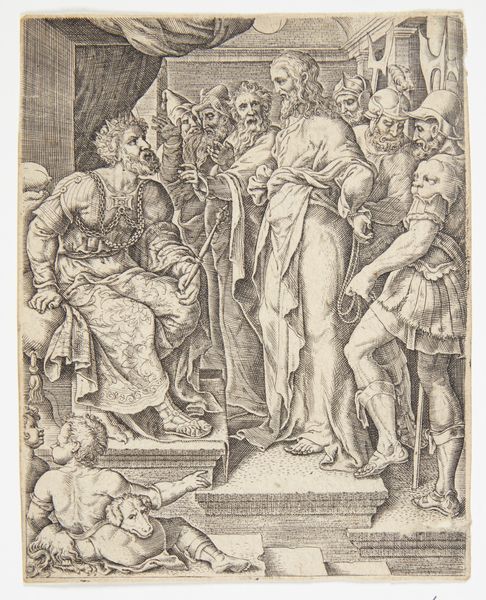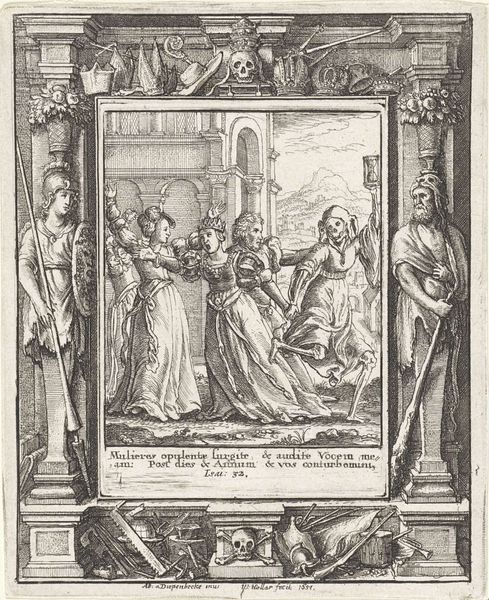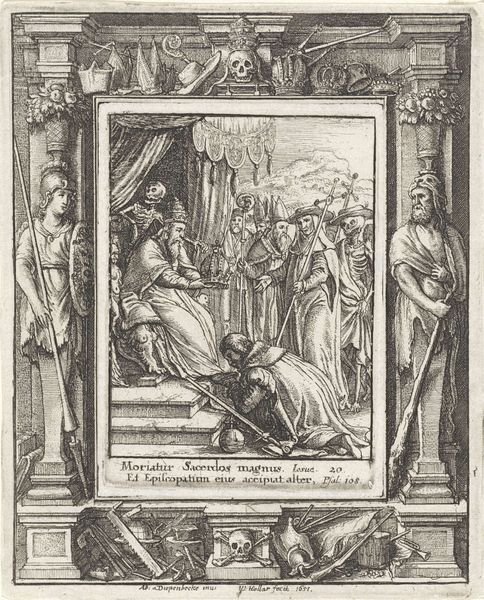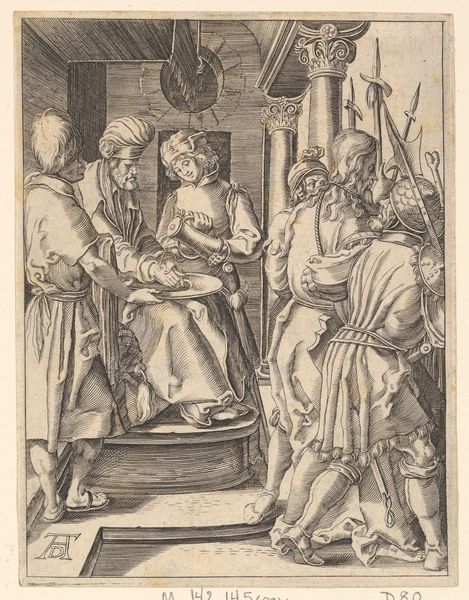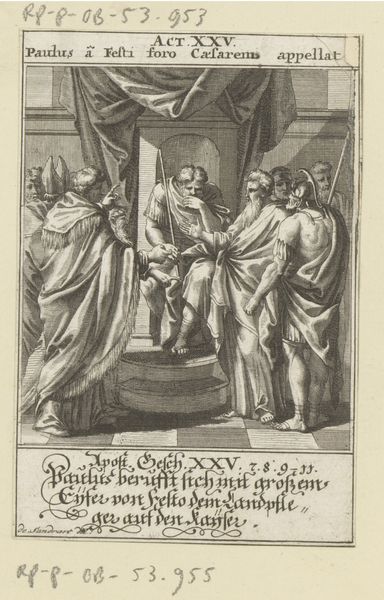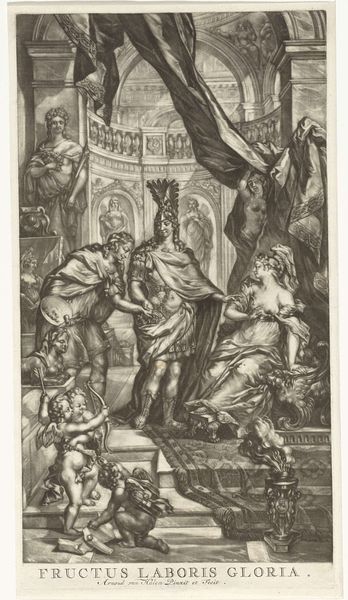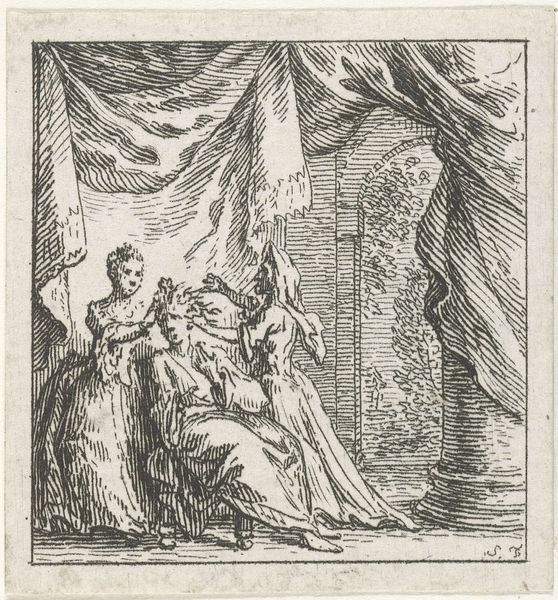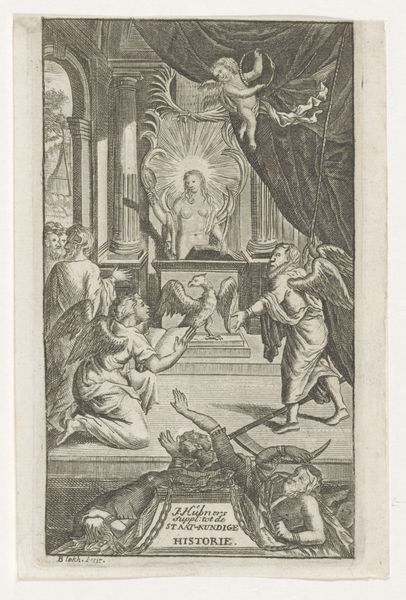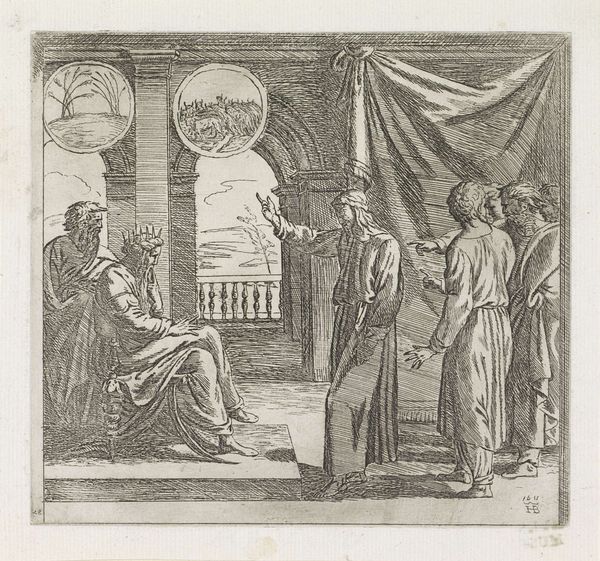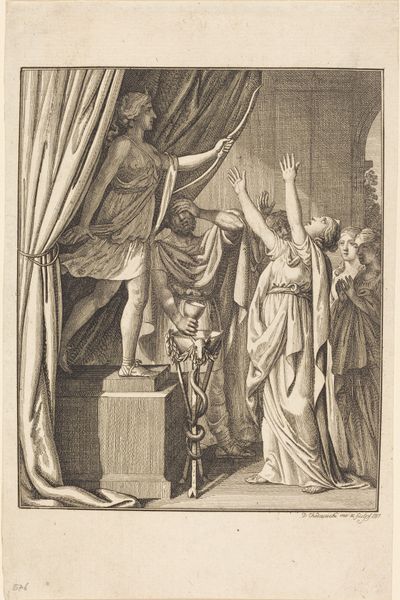
print, engraving
#
baroque
# print
#
old engraving style
#
figuration
#
history-painting
#
engraving
Dimensions: height 155 mm, width 105 mm
Copyright: Rijks Museum: Open Domain
Christoffel van Sichem II created this woodcut, "Koning van Indië," sometime in the 17th century. Visually, the composition is dominated by a central figure: the King. His presence is amplified through his elevated position on a throne and richly decorated attire. Note how van Sichem uses line and texture to define the King's regal garments and the heavy drapery behind him, contrasting with the simpler robes worn by the figures on the left. This contrast directs our attention and establishes a clear hierarchy within the scene. We might consider this work as an exercise in the semiotics of power. The King’s crown, sceptre, and posture function as signifiers of authority and dominance, each element reinforcing the idea of a divinely sanctioned ruler. The composition invites us to ponder how these symbols construct and communicate power, not just within the artwork, but also in the broader social context of the time. This symbolic language, meticulously rendered through the formal qualities of the print, opens up avenues for critical inquiry into structures of authority.
Comments
No comments
Be the first to comment and join the conversation on the ultimate creative platform.
